Setting the Stage
Playing The Creative Assembly’s Rome: Total War (2004) is a manner of performing history. When the map loads, the Mediterranean world appears under a technicolor backdrop of young factions ready to be swallowed up by the Roman banners. The first playthrough only permits players to select among three Roman families: Julii, Scipii, and Brutii, which imposes a “historic” Roman narrative of conquest. Only after you conquer a faction (such as Gaul or Egypt) are you allowed to play as them and experiment with alternative timelines and empires. The general language of “epic” smothers the entire Total War experience as the game encourages serious participation in the building of the “greatest” Classical-Western empire. Scare quotes are abound in this brief summary because this historic simulation is incredibly unstable. The very idea of “Roman-ness” flutters away the moment we try to identify it. It all goes to show that even a strategy game can be campy.
I wish to clarify: there is nothing wrong about performing Rome. Any period piece requires certain postures and costumes that evoke a previous era. The danger is when these individual components overpower the narrative and overall message of the work. Many critics have explored the problematic ideology of supposed historical games; James Patton’s work on the Assassin’s Creed series and Errant Signal’s exploration of Civilization represent invaluable reading on the subject. Whereas other critics interrogate the relation between form and content I want to focus on style and content. Style not just as a visual aesthetic but the sense of liveliness and charisma a game offers to its audience. We know there are problematic games that portray biased accounts of history, but what are we going to do with them? Is there an option other than not play?
The Symbol of a Curly Lock
Julius Caesar (1953), Dir. Joseph L. Mankiewicz
Undeniably, history without respect turns textbooks into a chain of symbols that comfort rather than engage our understanding of bygone eras. Roland Barthes, the French literary theorist, called attention to what he calls “Roman-ness” in his short essay “The Romans in Films” found in a collection of works titled Mythologies. Following an interest in semiotics, or the study of signs and symbols that contribute to cultural meaning, Barthes spends much of the essay fixating on a lock of curly hair placed on every male actor in Mankiewicz’s film Julius Caesar (1953):
We therefore see here the mainspring of the Spectacle – the sign – operating in the open. The frontal lock overwhelms one with evidence, no one can doubt that he is in Ancient Rome (24)
The significant attention Barthes gives to the lock of hair seem silly, as if the curl can capture the entire political, economic, and aesthetic feel of Rome. Yet a leveled critical eye to most media will yield the same realization that clichés and symbols dominate our daily lives. When any piece of media claims to draw from history, the stakes are doubly raised as the use of cultural symbols threatens to abridge context for the sake of popular expectations. In response to the media environment, the critical consumer has the responsibility to recognize the difference between the authentic and the burlesque.
Seven years after Barthes’ collection of essays in Mythologies, Susan Sontag published “Notes on Camp,” in 1965 and drew critical attention to a “sensibility” of artistic production. In a series of “jottings,” Sontag expresses the feelings of camp:
10. Camp sees everything in quotation marks. It’s not a lamp, but a “lamp”; not a woman, but a “woman.” To perceive Camp in objects and persons is to understand Being-as-Playing-a-Role. It is the farthest extension, in sensibility, of the metaphor of life as theater
Sontag’s language gives depth to Barthes’ observations and reveals how the lock of hair signals the quotations; that character is a “Roman” and the audience ought to expect a certain personality and narrative from this toga-clad fellow. Recognizing camp is not just a matter of taste but an essential skill that allows us to understand what a work of art is trying to do and what the proper emotional response ought to be.
Hail, Caesar! (2016), Dir. Ethan and Joel Coen.
In video game scholarship, Platinum Games’ Bayonetta received mismatched reception when its audience remains ignorant of the camp performance at work in the game. Wired’s Gus Mastrapa inadvertently reveals how remaining blind to the camp sensibility not only leads to misinterpretation but also frustration that an experience seems horribly mismatched to the content. Gamasutra writer Christian Nutt responded to Mastrapa with a piece that not only succeeded in addressing Bayonetta as a production of camp but established the stakes of camp aesthetic in video games as the medium continues to experiment with style and genre.
Gladiator (2000), Dir. Ridley Scott
Yet camp is not limited solely the realm of gratuitous action and fighting games. Even though Rome: Total War does not contain the same elements of gaudy animations and hyper-stylized cinematics, it is still a performance of “military conquest” without actually questioning the realities of war or empire. As a result it follows Sontag’s bullet number nineteen: “The pure examples of Camp are unintentional; they are dead serious.” RTW steadfastly believes it is capturing a historic experience when in fact its many design decisions compress the nuances of the ancient Mediterranean. What follows is an inaccurate array of costumes and mechanics that in effect proclaim farce as fact.
Outdated Egyptian Infantry, Rome: Total War (2004)
Costume is a defining feature of drama often used to subtly signify a character’s origins, style, and mood. Rome: Total War instead chooses to reduce costumes to what Barthes referred to as “signs” that grossly assert a singular fiction of ancient culture. Barbarians equal shirtless bearded men; Greeks mean phalanxes and round shields. Like Barthes’ Roman lock, these designs comfort the player with a history they already believe. These are not new observations. On the website “All Empires, Online Historical Community,” the user Invictus, Rider, Emp. Barbarossa constructed a list detailing the inaccuracies of the game and calls scathing attention to the portrayal of Egypt. The Egyptians units consist of chariots and desert axemen and represent military organizations that are centuries older than the Ptolemaic Dynasty which ruled as contemporaries during Rome’s empire. A user known as HussarKnight from rtw.heavengames.com also criticized the game for its vibrant military color schemes that would have been impossible given the cost and limitations of ancient dyes. When we compile these decisions it becomes clear that the The Creative Assembly appropriated vast swathes of ancient culture as window dressing to prove the game is actually taking place in the space of the Greco-Roman imagination.
Perhaps the exemplar absurdity is the gladiator units unique to the Roman factions. Recruitable after building an arena, the gladiator unit resonates with a tradition of Hollywood “Roman-ness” such as Kubrick’s Spartacus and Ridley Scott’s Gladiator. Sontag reminds us: “to perceive Camp in objects and persons is to understand Being-as-playing-a-Role.” Despite the fact that soldiers would never use the gladiator’s scant armor in the field, the unit works as proxy to alleviate any doubt that these are Roman times a player might know from the movies. Even if a player never recruits a unit of gladiators, the option floats there in the recruitment menu and pretends to be a legitimate strategic decision. I recognize that simply reciting these inaccuracies is not particularly useful but they are necessary first steps to address how The Creative Assembly glosses over history to present a performance of history. Examining the game’s AI politics next reveals how the players receive an idealized, pre-defined view of history sheared of thoughtful complexities.
Digital Governments
The game design Youtube channel, “Extra Credits” dedicates an episode to exploring the value of history games as situational exercises to understand the choices that historical figures may have had to consider. Show writers, Daniel Floyd and James Portnow commend the original Rome: Total War’s family management system for making the player accept the uncontrollable reality that incompetent family members may need to serve as governors and generals in order to keep a family of nobles in power. This system is often out of the player’s control and promotes character personalities without reducing their attributes to gamified upgrade charts. In contrast the complex depictions of family life, The Senate AI is a prime example of camp in Sontag’s words because it represents “artifice as an ideal” without any attempt to make the player consider a larger system at work.
When a player starts a game the unplayable SPQR faction controls Rome and designates missions for the player to complete for monetary and prestigious rewards. Soon however, these missions conflict with the player’s own intentions, often requesting ports to be blockade or settlements taken where the player may not have troops mobilized. Failure to complete these missions decreases the player’s popularity with the senate until the senate may ask that the player’s faction leader commit suicide. At this point, the player has too much at stake in their empire and must begin a civil war to remove the troublesome politicians.
Reading these series of mechanics and choices as a narrative reveal that the Senate AI exists to be supportive at first, then offended, and ultimately overthrown. This three act account primes the player to perform their own crossing of the Rubicon. The skeptic may want to argue: “Well, isn’t that how Caesar felt? Isn’t that historically accurate?” That argument fails to take into account the immense history of political theory present at the time of the Roman Republic. As the ancient Greek historian, Polybius, writes in book six of The Histories, the Roman constitutional system developed to incorporate the best attributes of democracy, aristocracy, and monarchy. Polybius argues this was a necessary tripartite balance of power:
For when one part having grown out of proportion to the others aims at supremacy and tends to become too predominant… the purpose of the one can be counterworked and thwarted by the others (W.R. Paton translation)
He later then goes on to explain how the military depended on the senate to appoint tribunes and recruit soldiers. These mechanisms of military policy are never observed by the player and so they never respect the importance of the Senate within their overarching goal to conquer the Mediterranean. From the player’s perspective, they are the ones recruiting troops, organizing armies, and conquering regions. The Senate seems superfluous and exists only to be overthrown when in fact, the Senate was essential to providing Roman generals like Julius Caesar with the logistical and financial infrastructure necessary to wage war.
One may argue that the developers simplified the mechanisms of recruitment for ease of use and that Polybius’ documentations are implicit whenever one selects a unit to recruit in each Roman settlement. However, even if this was a deliberate abbreviation for the sake of simplicity, it carries a false valence of singular power. The mechanic of the “recruit button” suggests to the player that military power had already been consolidated, even before the Republic transitioned to Empire. If the player’s strength depended on the Senate AI then this would represent a systemic value within the Senate and imitate the checks and balances present in Polybius’ chronicle. When the game fails to consider the Senate’s importance it precludes the assumption that dictatorship is necessary. Such assumptions sacrifice complex decisions for pre-scripted experience; we are not allowed to choose like Caesar, instead we ham the motions and stakes of his coup then call it a day. After applying Extra Credits’ standards history-driven gameplay, I hope it is evident Rome: Total War does not provide any space for its audience to consider questions of political theory before deciding to commit civil war. When the Senate is oversimplified it becomes an artificial construct performing the role of annoying nanny state just begging to be overthrown. The game sacrifices the greatest asset of its medium, the opportunity for choice, and then hides that failure under the deluded quotation marks of “real history.”
Toy Soldiers
Reading the game’s mechanics on a spectrum of authentic choice and railroaded idealism extends to the battlefield portions of the game. Some of the chief features written on the game’s box promise that the combat simulator offers an “intuitive,” “epic,” and “cinematic” 3D experience dedicated to the realism battlefield tactics.
I can agree that the developers invested more time in the kinds of units available rather than how they looked. Within the timeline of a single campaign, the available Roman units vary from before and after a key piece of military reform known as the Marius Reformation. The game’s early legionnaires consisted of velites, hastati, principes, and triarii—a design decision that accurately reflects Polybius’ treatises. The tutorial battle instructs new players about how to use the pre-reformation military with tactics such as javelin throwing skirmishers followed by engaging the enemy with progressively veteran troops. Stylistically, these units align with Extra Credits’ model because they demand the player to weigh their decisions against a series of limitations found in each unit. No single unit can win the battle so the pleasure of playing emerges from finding spatial arrangements that maximize the synergy and support between units.
Roman Samnite Gladiator Unit, Rome: Total War (2004)
These early units vary greatly from the faster and stronger cohorts accessible later in the game who are more capable of holding their line in battle for extended periods. At this point in the game, the player’s sizable holdings allows them to purchase the most expensive units. Building massive cavalry armies with several units of legionary cohorts to use siege equipment becomes the dominant strategy.
This late game build greatly decreases unit diversity and creates a false image of the Roman army. The units no longer need to work together as elegantly since the player can afford to be wasteful. Again, the notion of style returns, although nothing is particularly upsetting (Romans did have powerful cavalry) the feel of the late game battles seems wrong. At a time when the stakes of a large empire seem greatest player only has to go through the motions of conquest. The game lets on through this late game weakness that there is no more challenge and the player is well on their way to the predestined empire.
Testudo Formation Dyed an Impossibly Bright Blue, Rome: Total War (2004)
Like other mismatched elements of the game, the artificial quality of the overpowered late game attempts to hide beneath a veneer of “Roman-ness.” Unlike the hastati and principes, the legionary cohorts have the option to employ the testudo formation. The famous “turtle” formation of interlocking shields may perhaps be the epitome of the Roman military as it represents discipline and order that other factions never achieved. Like the gladiator unit, the testudo formation draws on a larger intertextual narrative, especially the opening scene of Gladiator when legions use the testudo to render Germanic arrows ineffective.
On the virtual battlefield the testudo formation is never particularly useful since the formation moves so slowly that the battle may already be decided by flanking cavalry. However, the button remains, as a pseudo-option that the testudo may be useful, hinting at some greater complexity that does not exist. So we are left with the strange mechanic that never really needs to be chosen but only comforts the player as an option because “That’s what Romans did.”
Cinematic Delusions And Conclusions
All these observations of camp might best be encapsulated in a critical viewing of the game’s introductory sequence that plays after loading up the program. The video begins with gritty scenes of troops on the march before an aerial shot pans over a Roman city under siege. The same costumes I previously cited as outrageous help us identify an even more egregious suggestion that Carthage, Gaul, and Britannia have teamed-up to take the battle to Rome. This campy alternative history has the audacity to suggest Rome is the underdog and that only military courage and discipline can win the day against a coalition of barbarians.
Enemy entering gates of Minas Tirith,
The Lord of the Rings: The Return of the King (2003), Dir. Peter Jackson
Lord of the Rings Imitation Shot
Screen Capture: Rome: Total War (2004)
If there has been any doubt thus far on the place of camp in this game, I need only to point to cinematic references of the 2003 film The Lord of the Rings: Return of the King that appear among thunderous drums in the last moments of the video. Carthage’s famous elephants crash into a sallying Roman cavalry like Mumakil against the riders of Rohan. Then the gates shatter and more elephants cross the threshold directly quoting the image of battle trolls storming through the gates of Minas Tirith. This isn’t history, it’s fantasy; on par with Flash Gordon and Rocky Horror as hyperbolic performances of their respective genres.
Sontag’s phrase, “style at the expense of content” cannot be overstated. Rome: Total War forgets that its namesake was an actual place and not just a collection of costumes and staged scenes. Nevertheless, there is a great joy in outflanking the enemy, building legions, and spreading the banner of Rome throughout Europe. That is the final element of camp I wish to assert. The campy simulator can get most of its target of simulation incorrect but it cannot be aware of its flaws. The game, though outdated with repetitive animations and low-fi models, deserves both ridicule and appreciation; not because it holds a mirror to history but because it holds a mirror to ourselves. It is a product of our millennial impressions of “Roman-ness” and the way media images replace fact within our collective consciousness. It deserves both a wink and click simultaneously; we can see joke it lays out. So grows the list of enjoyably bad cult games.

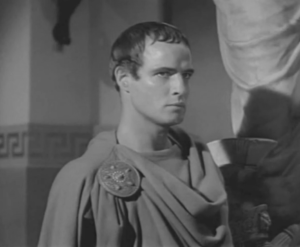

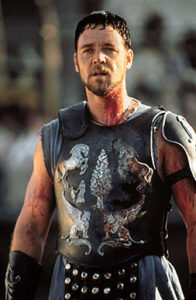
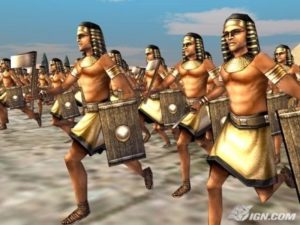
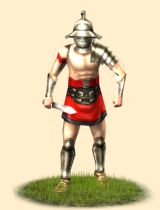
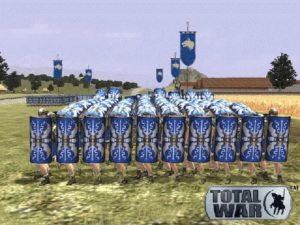

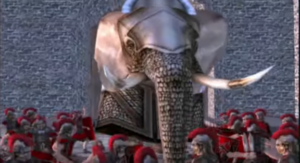
1 Comment